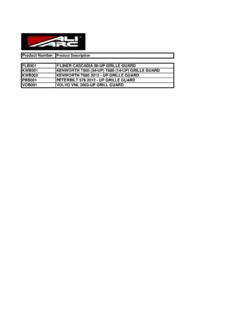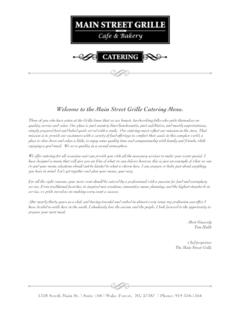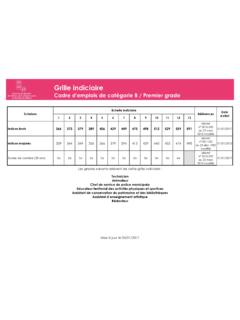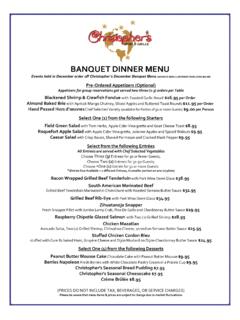Transcription of Baseball Skills Assessment Form - …
1 Copyright 2006, Neil R. Bonner | | (Rev. February 2006) Baseball Skills Assessment Division: _____ Coach: _____ Date: _____ Page: ____ No. Player Fielding Throw & Catch Hitting Pitch & Catcher Comments Name: Infield: Throwing: Hitting: Pitcher: _____ Mechanics 1 2 3 4 5 Mechanics 1 2 3 4 5 Mechanics 1 2 3 4 5 Mechanics 1 2 3 4 5 Size: S M L Range 1 2 3 4 5 Strength 1 2 3 4 5 Power 1 2 3 4 5 Speed 1 2 3 4 5 Throws: R L Bats.
2 R L S Overall 1 2 3 4 5 Accuracy 1 2 3 4 5 Contact 1 2 3 4 5 Accuracy 1 2 3 4 5 Outfield: Overall 1 2 3 4 5 Catcher: Attitude, Focus, Hustle: Foot Speed: Range 1 2 3 4 5 Catching: Mechanics 1 2 3 4 5 Hm 1B: 1B 3B: Overall 1 2 3 4 5 Overall 1 2 3 4 5 Overall 1 2 3 4 5 Arm 1 2 3 4 5 Name: Infield: Throwing: Hitting: Pitcher: _____ Mechanics 1 2 3 4 5 Mechanics 1 2 3 4 5 Mechanics 1 2 3 4 5 Mechanics 1 2 3 4 5 Size: S M L Range 1 2 3 4 5 Strength 1 2 3 4 5 Power 1 2 3 4 5 Speed 1 2 3 4 5 Throws: R L Bats: R L S Overall 1 2 3 4 5 Accuracy 1 2 3 4 5 Contact 1 2 3 4 5 Accuracy 1 2 3 4 5 Outfield: Overall 1 2 3 4 5 Catcher: Attitude, Focus, Hustle: Foot Speed: Range 1 2 3 4 5 Catching.
3 Mechanics 1 2 3 4 5 Hm 1B: 1B 3B: Overall 1 2 3 4 5 Overall 1 2 3 4 5 Overall 1 2 3 4 5 Arm 1 2 3 4 5 Name: Infield: Throwing: Hitting: Pitcher: _____ Mechanics 1 2 3 4 5 Mechanics 1 2 3 4 5 Mechanics 1 2 3 4 5 Mechanics 1 2 3 4 5 Size: S M L Range 1 2 3 4 5 Strength 1 2 3 4 5 Power 1 2 3 4 5 Speed 1 2 3 4 5 Throws: R L Bats: R L S Overall 1 2 3 4 5 Accuracy 1 2 3 4 5 Contact 1 2 3 4 5 Accuracy 1 2 3 4 5 Outfield: Overall 1 2 3 4 5 Catcher: Attitude, Focus, Hustle: Foot Speed: Range 1 2 3 4 5 Catching: Mechanics 1 2 3 4 5 Hm 1B: 1B 3B.
4 Overall 1 2 3 4 5 Overall 1 2 3 4 5 Overall 1 2 3 4 5 Arm 1 2 3 4 5 Name: Infield: Throwing: Hitting: Pitcher: _____ Mechanics 1 2 3 4 5 Mechanics 1 2 3 4 5 Mechanics 1 2 3 4 5 Mechanics 1 2 3 4 5 Size: S M L Range 1 2 3 4 5 Strength 1 2 3 4 5 Power 1 2 3 4 5 Speed 1 2 3 4 5 Throws: R L Bats: R L S Overall 1 2 3 4 5 Accuracy 1 2 3 4 5 Contact 1 2 3 4 5 Accuracy 1 2 3 4 5 Outfield: Overall 1 2 3 4 5 Catcher: Attitude, Focus, Hustle: Foot Speed: Range 1 2 3 4 5 Catching: Mechanics 1 2 3 4 5 Hm 1B: 1B 3B.
5 Overall 1 2 3 4 5 Overall 1 2 3 4 5 Overall 1 2 3 4 5 Arm 1 2 3 4 5 Standard Structure for Baseball Tryouts & Skills Assessment This standardized format may be used for all outdoor Baseball tryouts. This structure is designed for evaluating players for All-Star travel teams but can also be used to evaluate players for draft purposes within house leagues. Using the attached Baseball Skills Assessment form , coaches should score each player according to the listed categories of Skills .
6 The evaluation form uses a five point scale to measure the various Skills that a player should possess in order to play Baseball at a competitive/competent level. A score of five (5) points should be awarded for any skill which the player demonstrates an exceptional level of ability relative to his peers. A score of one (1) point should be awarded for any skill which the player demonstrates an extremely poor level of ability relative to his peers. Score two, three or four points for levels of skill in-between the two extremes.
7 So that the All-Star selection process is fair to all players, the evaluators should use the quantitative scores to select the first eight (8) players on the team. The All-Star manager would then select the final four (or more) positions on the team using any criteria he sees fit. Managers can weight the categories according to their thoughts as to what makes a good team. The following is a suggestion for a balanced approach: Using the overall score in each of the following defensive categories: infield, outfield, throwing, and catching, there are a maximum of 20 points.
8 For the hitting Skills , coaches should count mechanics, power and contact for a maximum hitting total of 15 points. Coaches should add 1 or 2 points to the players with the fastest times during the base running Assessment and deduct 1 or 2 points to the slowest players. Coaches may award or deduct points based on a player s demonstrated attitude, focus and hustle. Finally, coaches may wish to add between 1 and 5 points for pitching or catching Skills as these positions are very important to a team. Format of Tryouts So that there be a well defined structure and opportunities for evaluation, the league should consider structuring the tryouts as follows.
9 Everyone should plan on the tryouts taking between 2 and hours to complete. Time Activity 5 min. 0:05 Opening remarks by All-Star manager and/or tryouts coach. Explain format of tryouts, how players will be evaluated, and importance of behavior, hustle and good attitude. 10 min. 0:15 Warm up. Jog once around entire field, then warm-up by throwing to a partner. 10 min. 0:25 Base Running Skills . Lineup players at home plate. Time players on their ability to go from the batter s box to 1B. Afterwards, have them run from 1B to 3B.
10 Allow them to overrun 3B as you don t want them to slide into 3B. Make sure players tag each base. Use a stopwatch to call out times. 20 min. 0:45 Infield Skills . Lineup players in outfield just behind the shortstop. Each player rotates through the positions starting with shortstop. Coach hits five balls to shortstop who fields and makes a throw to 1B. Hit balls to left and right to evaluate range. Then hit one ball to 2 Bman who throws it to the shortstop who then throws to 1B for a double play. Players then rotate from SS to 2B to 1B to home.




